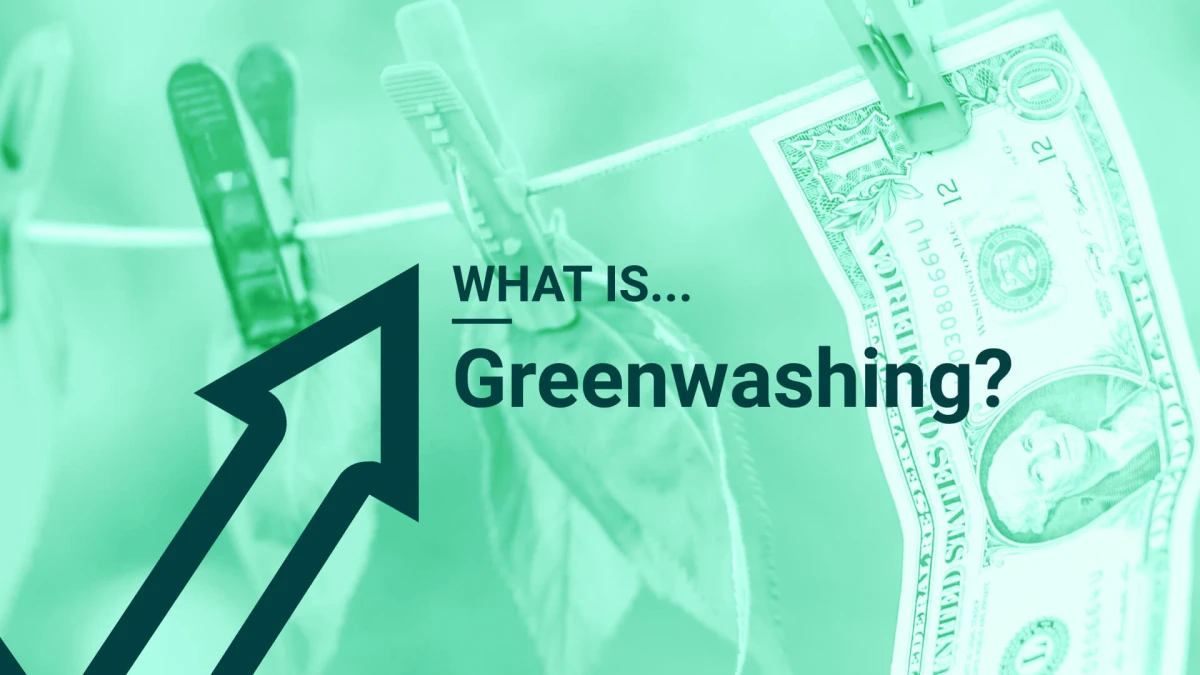Simply put, greenwashing is the act of exaggerating or fabricating environmental credentials of an investment. In a world where we are attempting to limit the damage of climate change, companies which use greenwashing to entice new investment are damaging efforts to build a more sustainable future.
#Origins and importance
The term ‘greenwashing’ was coined by environmentalist Jay Westerveld. He noted that hotel chains routinely requested that guests reuse their towels in order to benefit the environment. Westerveld, then a student, thought this odd when he saw little evidence that the very same hotels were doing anything to benefit the environment themselves.
People are more aware of environmental issues than ever. Research released by Gartner in June showed that 85% of investors considered ESG factors in their investments in 2020. Additionally, media mentions of ESG data, ratings or scores grew by 303%.
Both institutional and retail investors are driving this interest. Many big institutional investors have committed to the net zero transition, leaving them searching for low-carbon investments. Meanwhile, many retail investors are keen to watch their savings grow, but don’t want to sell their conscience in order to do so.
It’s also important to note that greenwashing is important to be aware of even if you are not climate conscious. Environmental awareness is growing and companies which can adapt to cleaner and greener ways of operating are going to attract more attention. As such, any companies which get caught greenwashing are likely to face investor backlash.
#Types of greenwashing
It’s hard to know how widespread greenwashing is. A study released in January by The International Consumer Protection Enforcement Network (ICPEN) found that as many as 40% of company claims about sustainability were misleading or overstated their impact on the environment.
Part of the problem with measuring the scale of the problem is that companies don’t just greenwash in one way. Instead, there are simply a variety of ways in which company’s might seek to mislead investors, customers and partners about how environmentally friendly their products or practices are. These methods range from simply glossing over some factors, to being outright deceitful.
Westerveld, who coined the term, developed the so-called ‘seven sins of greenwashing’. These are:
Hidden trade-offs
No proof
Vagueness
Worshipping false labels
Irrelevence
Lesser of two evils
Fibbing
Alone, these terms are a little anonymous. Below are some examples which might help you to understand them.
#Practical examples
An example of hidden trade-offs might involve a company making a claim which overshadows its environmental impact. A retailer might claim to plant a tree for every ten sales of a certain product. This sounds great, but the product might have an enormous carbon cost compared to alternatives.
The false labels ‘sin’ often amounts to the use of fake or unrecognised certification. For example, a company’s products might be emblazoned with labelling claiming they are 100% natural. This might be designed to look like an official designation. Instead, it is actually just an internally designed label using ambiguous language. Other examples include real ‘awards’ from questionable third parties.
At the other end of the scale are cases where companies completely fabricate data, which Westerveld called ‘fibbing’. For example, Japanese paper manufacturer Oji Paper admitted in 2008 that it had been lying about how much recycled paper it used for over a decade.
Some companies use advertising campaigns to associate their brand with green developments. Environmental lawyers ClientEarth have accused nine oil giants of deceiving consumers with their messaging. The organisation said the firms were “responding to the climate crisis with ‘green’ marketing, while their core business remains fossil fuels”.
#How to tackle greenwashing?
Authorities and businesses are attempting to deal with the issue with several different tactics. For example, the Federal Trade Commission has guidelines for environmental marketing claims and is able to use these to prosecute false and misleading advertisement claims.
For example, 2013 saw the commission charge ECM Biofilms, American Plastic Manufacturing, CHAMP, Clear Choice Housewares and Carnie Cap with using false or misleading advertising concerning the how biodegradable their plastics were.
The US government is taking further action. Currently, the ESG Disclosure Simplification Act is awaiting Senate approval. This legislation would mean securities issuers would have to adhere to standardised ESG disclosures. The idea behind these standardised disclosures is that they make it easier to quickly compare different entities’ progress, rather than letting firms hide behind manipulated data.
Even so, there remains a gap in legislation when it comes to greenwashing. The Biden Administration has characterized itself as more environmentally focused than its predecessor. Time will tell as to whether this translates into a crackdown on greenwashing.
